Nagasaki (長崎) is located in the southwest of Japan. It is an important port city and the capital of Nagasaki Prefecture. Its rich history, culture, and attractive locations around the city make Nagasaki one of Japan’s most fascinating travel destinations. In this article, I’d like to share my weekend trip to Nagasaki, during which I visited a few of those attractions, and a simplified account of its profound history.
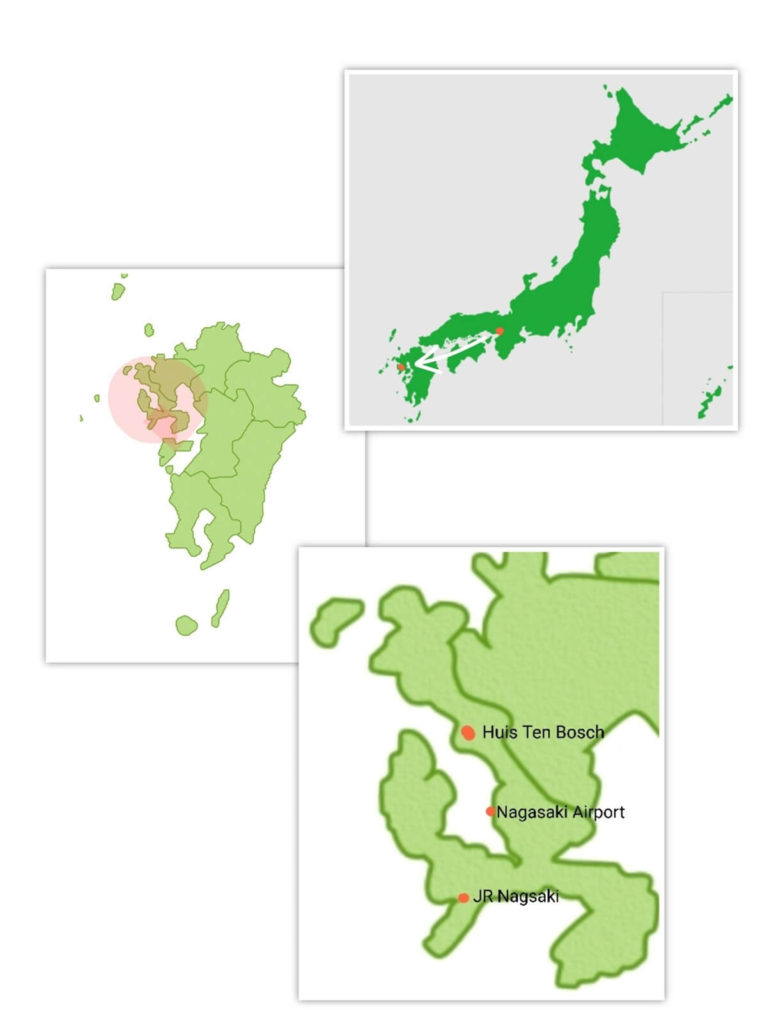
Flying from Osaka Airport to Nagasaki Airport took approximately 1 hour and 20 minutes.
From there, there was a 40-minute bus ride to Nagasaki City. The city has streetcars running through, which is very convenient for visiting tourist attractions.

Nagasaki Shinchi Chinatown (長崎新地中華街)
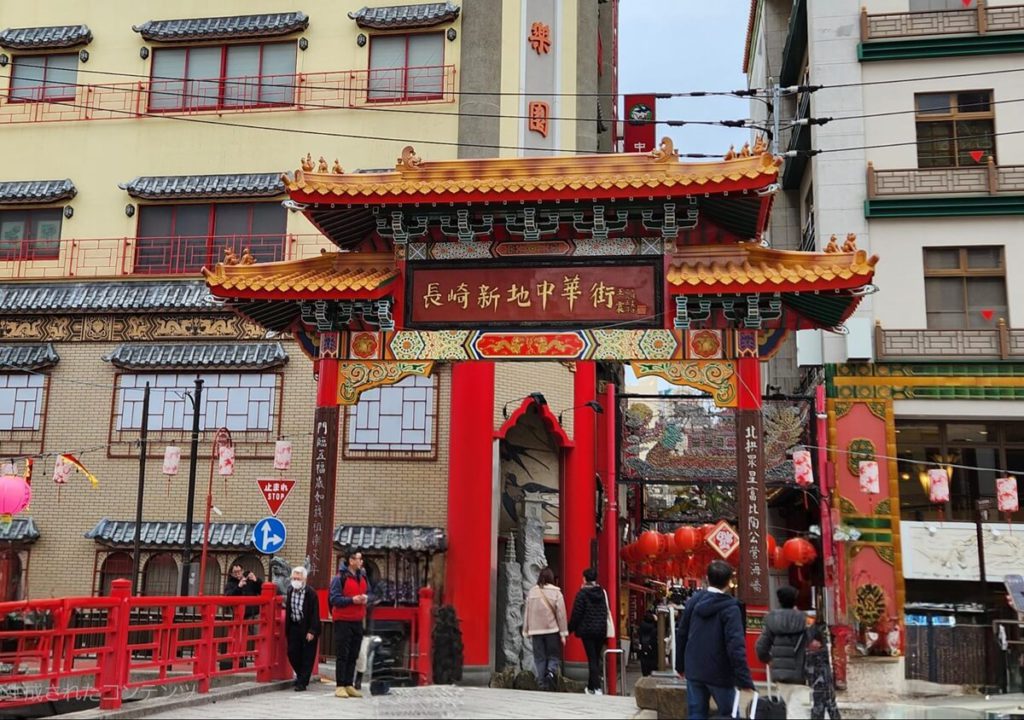
Our first destination was Nagasaki Shinchi Chinatown, which is one of Japan’s three most famous Chinatowns, along with Yokohama and Kobe. It is the best place to eat Nagasaki’s famous Chinese-influenced dishes, such as “Nagasaki champon” and “saraudon,” which I shared with my husband.
Both “Nagasaki champon” and “saraudon” are noodle dishes with various ingredients such as seafood, pork, and vegetables. The distinctive difference lies in how the noodles are prepared. Champon noodles are cooked in a milky broth, whereas saraudon noodles are deep-fried and crispy, coated in a glossy starchy sauce.
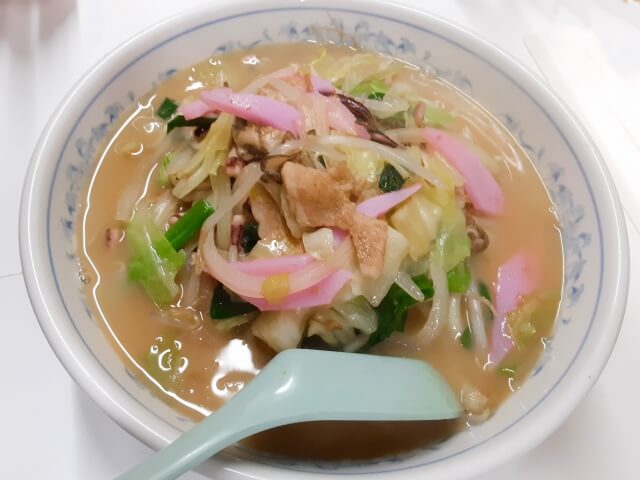
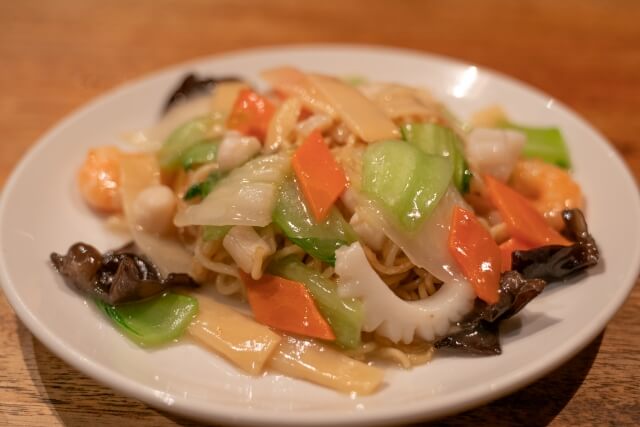
The Lantern Festival is held here to coincide with the Chinese holiday, the Spring Festival. At the time of our visit, the festival had just ended. It looks like a big annual event.↓
https://www.at-nagasaki.jp/lantern-festival
Wa Ka Ran Culture 「和華欄」文化
Now, I want to touch on the history and culture of Nagasaki for a moment. During the Edo period, Japan was in a state of national isolation for nearly two hundred years, starting from 1641. Nagasaki was the most important of only a few ports open to foreign traders during the period of isolation.
The mixed culture created under this influence is known as the “Wa Ka Ran Culture.” “和 Wa” stands for Japan, “華 Ka” for China, and “欄 Ran” for the Netherlands, and it is still very much present in their daily lives in buildings, food, and festivals. “Wakaran” also means “I don’t know” in Japanese.
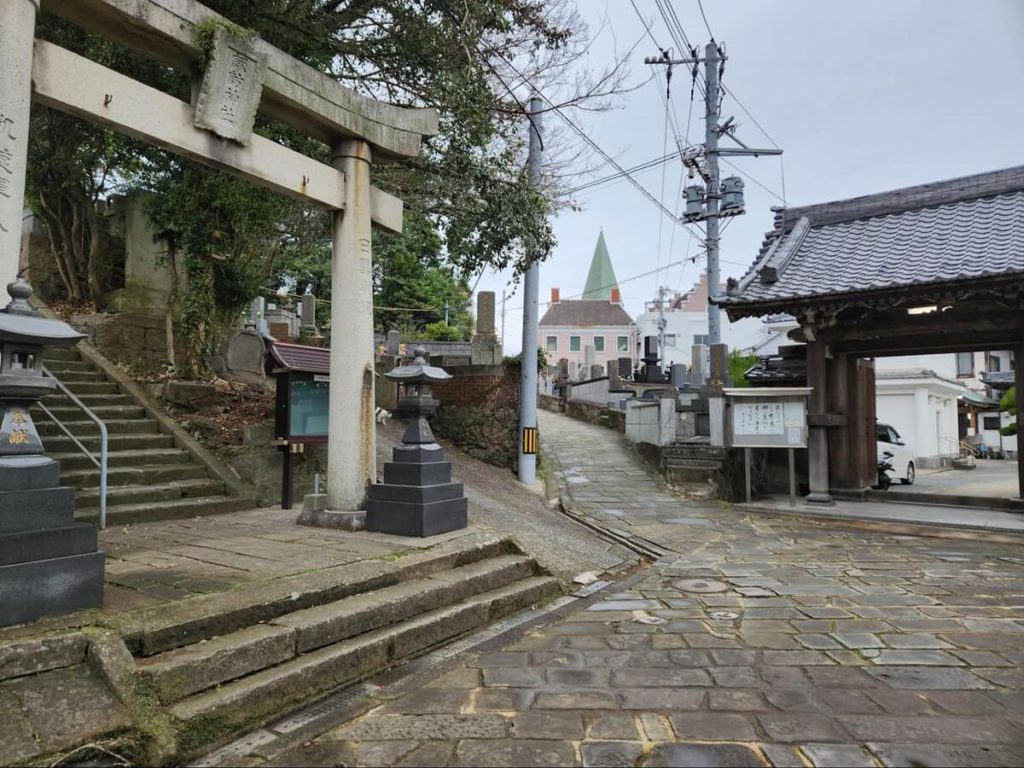
A unique spot where a shrine, a church, and a temple form a “Triangle of Prayer”
Ōura Church (大浦天主堂 Ōura Tenshudō)
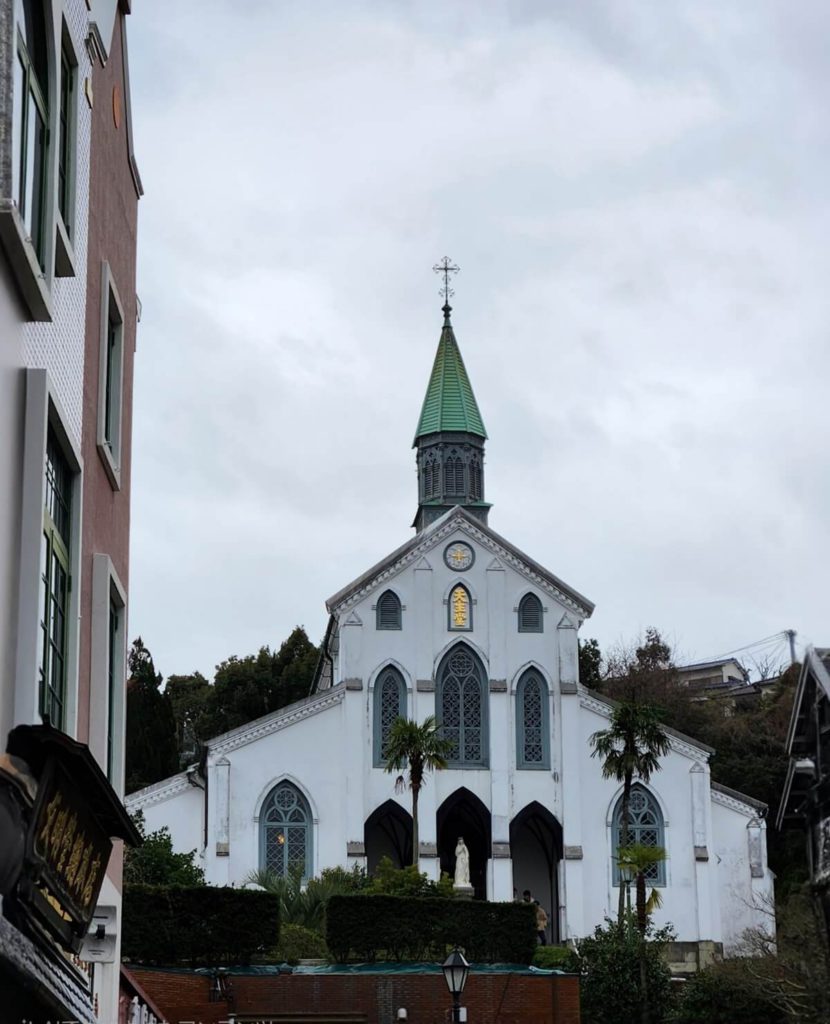
Ōura Church is Japan’s oldest standing Christian church, built in 1864 by French missionaries and was designated a World Heritage Site in 2018.
During the period of isolation, Christianity was strictly banned for fear of its authority and social order. Under the threat of death, many Japanese Christians, known as Hidden Christians, continued practicing their faith in secret until Japan reopened in the late 19th century. The church is famous for an event during which Hidden Christians came and revealed themselves to a French priest.
There are two other historical buildings on the grounds, and now they serve as a Christian Museum, offering various artifacts and old documents on display.
https://oura-church.jp/guide-en/
Glover Garden (グラバー園 Glover-en)
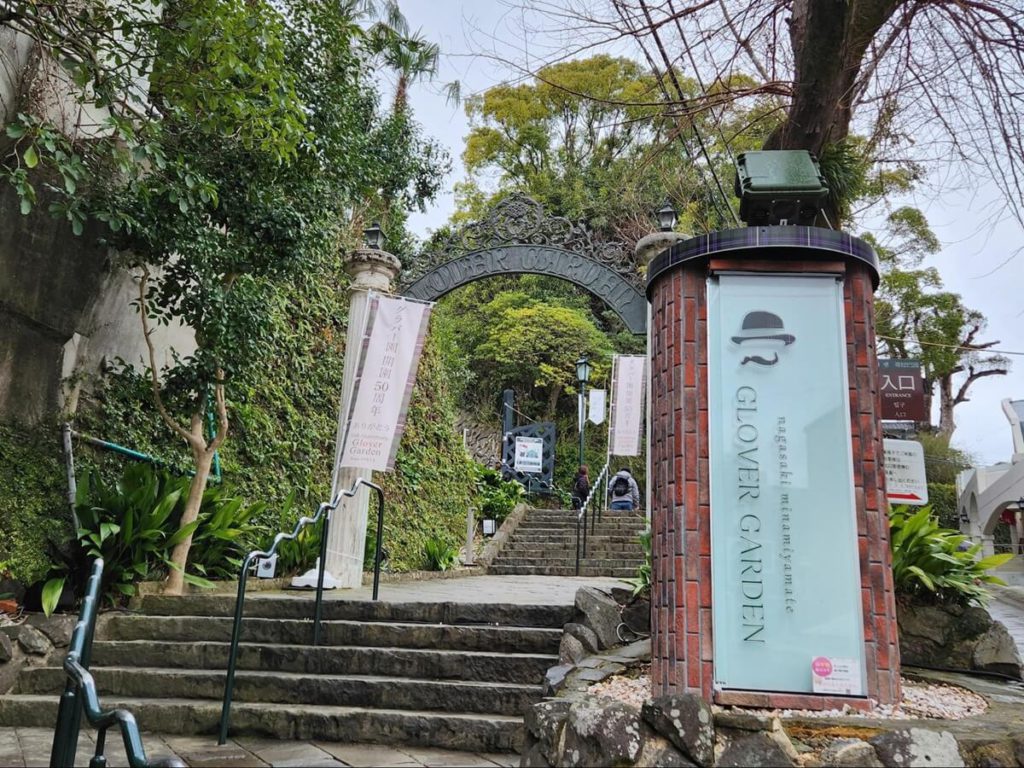
Glover Garden, located next to Ōura Church, is an open-air museum showcasing former Western inhabitants’ residences from the late 19th century. Established in 1863, it is named after Thomas Blake Glover, a Scottish merchant who was instrumental in modernizing Japan. Three nationally designated important cultural properties, including the mansion of Thomas Blake Glover, and precious traditional buildings scattered throughout Nagasaki City have been relocated and restored here. Visitors can explore multiple restored Meiji-era homes, which offer insights into the lives of foreign settlers during a pivotal period in Japan’s history.
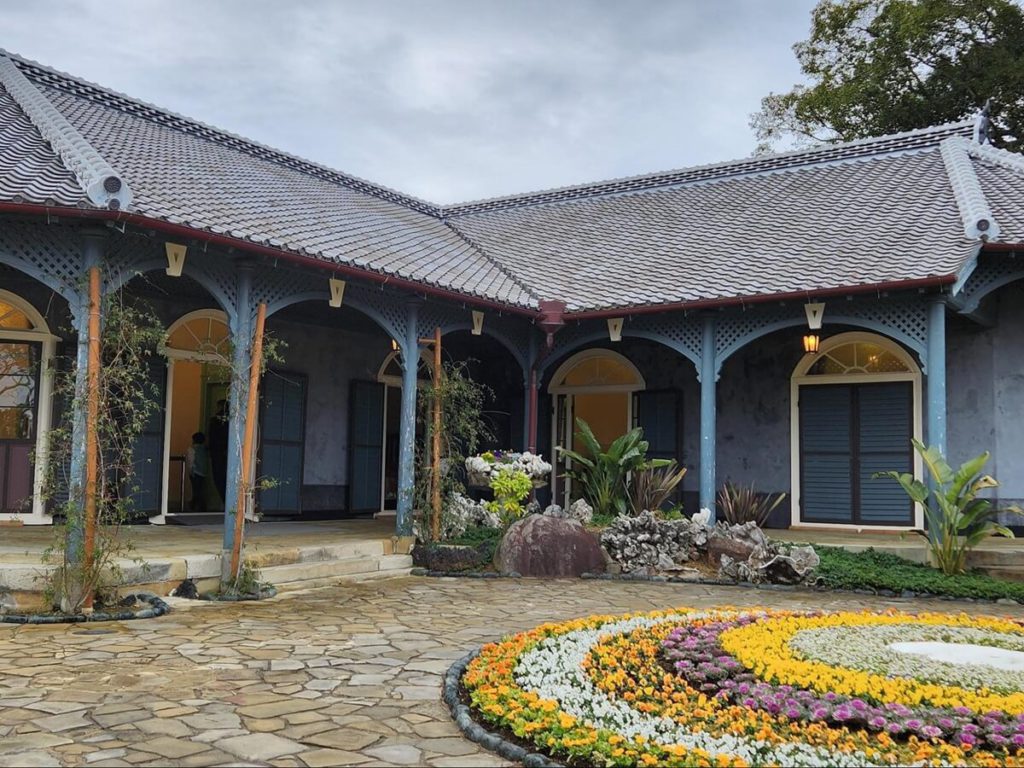
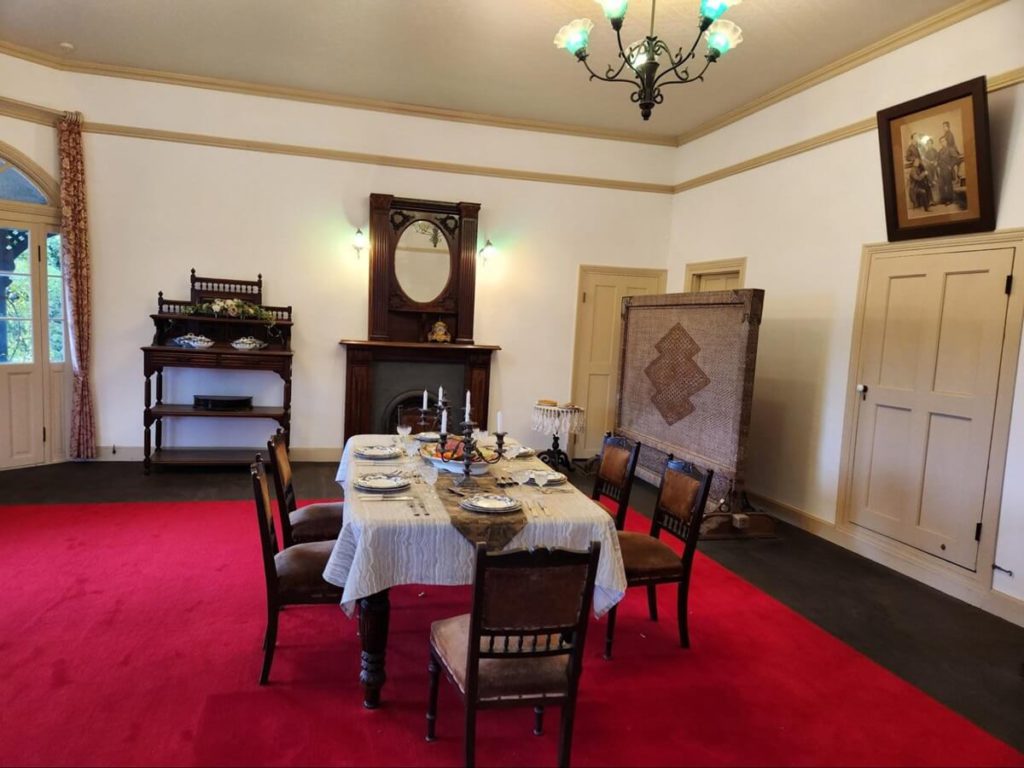
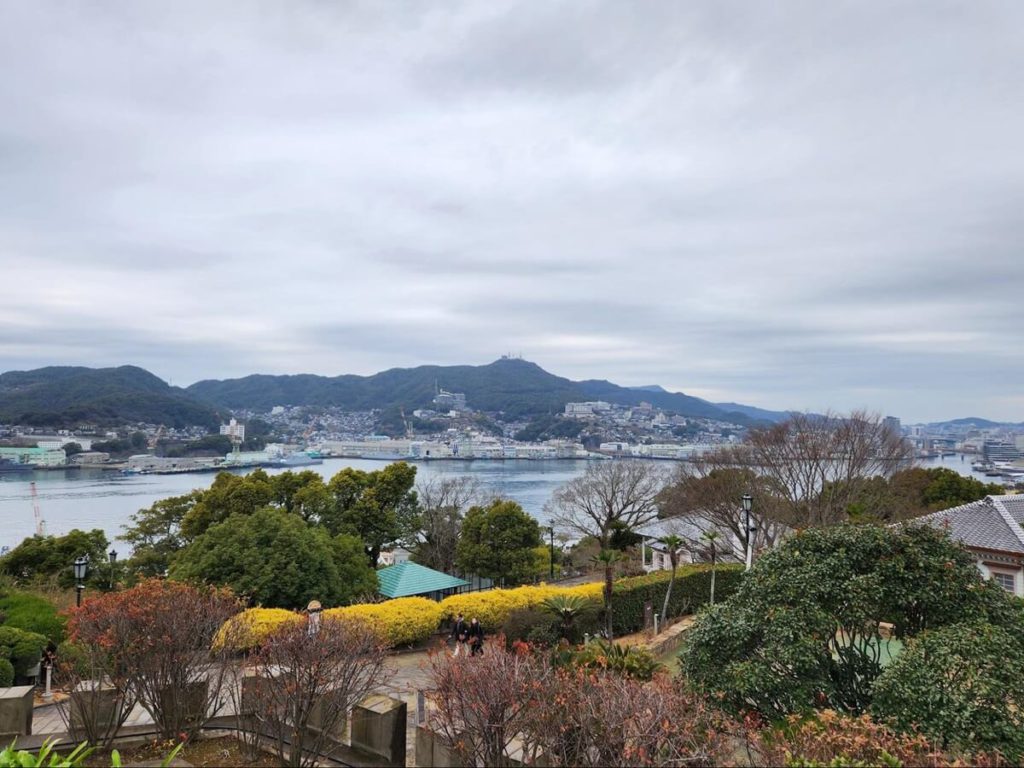
These places mentioned above are the most popular tourist destinations in Nagasaki. We spent quite a lot of time exploring them. Also, since Nagasaki is a city of hills, my legs were tired (although there were escalators in Glover Garden). On our way to the next destination, we stopped to buy one of the popular puddings I had wanted to try. However, to my disappointment, it was sold out.
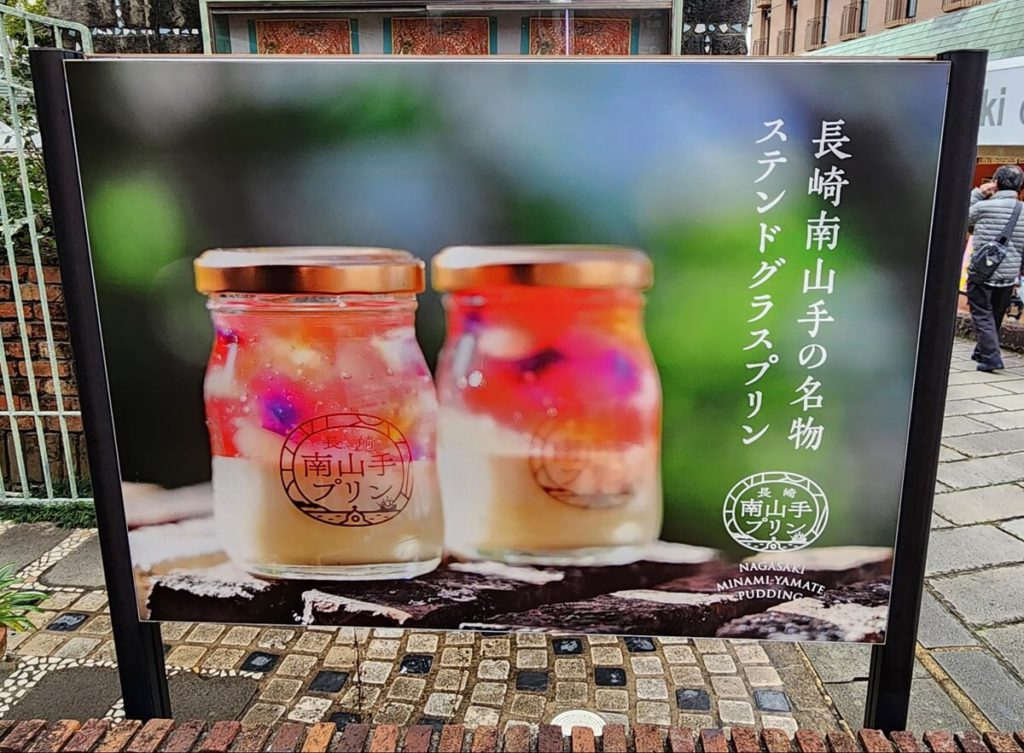
Dejima (出島)
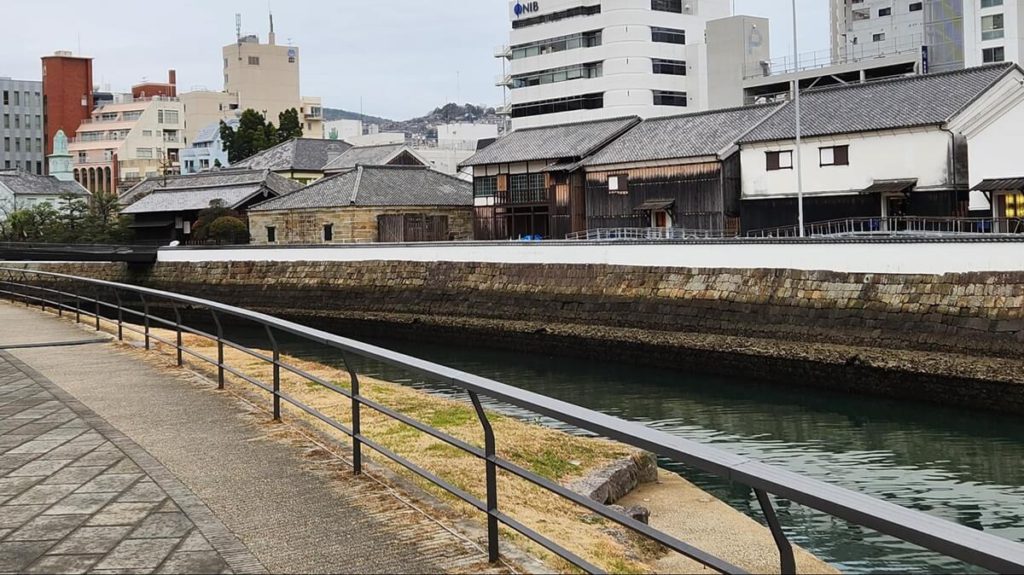
Dejima was a small, artificial island built in 1636 in Nagasaki Bay. During the period of isolation, Dejima served as the only gateway for limited trade and cultural exchange between Japan and Europe, exclusively for the Dutch from 1641 to 1859. Dejima had a distinctive fan-shaped design, allowing for efficient monitoring of the Dutch residents and restricted interaction with the Japanese population.
After Japan opened to the world in the late 19th century, Dejima gradually lost its original function, and the surrounding area was reclaimed. However, in recent years, restoration efforts have been underway to reconstruct Dejima’s historic layout and buildings. Visitors can explore the historical structures that reflect the Dutch people’s daily lives in the Edo period’s original atmosphere.
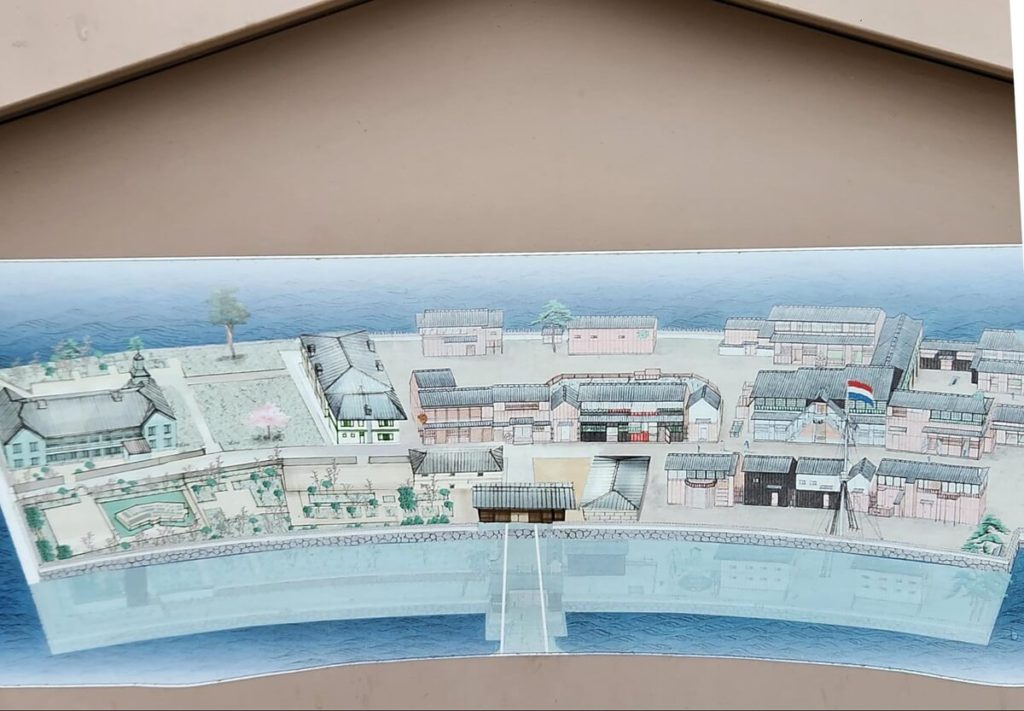
https://nagasakidejima.jp/english
Next, we were going to see the Spectacles Bridge (Megane-Bashi 眼鏡橋), but we gave up going there so that we could catch the shuttle bus to the hotel. It rained on and off and became heavier in the late afternoon.
Megane-Bashi, which looks like a pair of eyeglasses when they are reflected in the river water, is one of Japan’s oldest stone arch bridges. It is designated as an important cultural property.
https://www.at-nagasaki.jp/spot/95
A Spectacular Night View
Nagasaki is surrounded by steep mountains on three sides and faces the Nagasaki Port. Due to its geography, the city is built on slopes and hillsides, creating a stunning night view with lights scattered across different elevations. The night view of Nagasaki is considered one of the “Three Great Night Views of Japan” along with Kobe and Hakodate. It is also called the “10 Million Dollar Night View” and was reconfirmed as one of the “World’s New Three Greatest Nightscapes” in 2021 along with Monaco and Shanghai.
Mount Inasa (稲佐山) is one of the most famous viewpoints. The observation deck is about 333 meters high and can be reached via the Inasayama Ropeway, by car or bus.
https://www.at-nagasaki.jp/spot/115
The ryokan we stayed at was on the top of a hill. We spent a leisurely time in a spacious Japanese-style room with delicious food. From our room, we had a breathtaking night view. It made the day precious and unforgettable.

Here is a link to the ryokan: Nisshokan Bettei Kouyotei (にっしょうかん別邸紅葉亭)↓
https://hmihotelgroup.com/ryokan-koyotei/en
Conclusion
This trip to Nagasaki gave me a deeper understanding of its charms. There are many more places to see than those introduced here, and it would be impossible to visit them all in one day.
Unfortunately, this time we only had a two-day weekend trip, and on the second day we left Nagasaki City for Sasebo City, where a Dutch-themed amusement park, Huis Ten Bosch, is located. I will tell you more about it in my next blog.
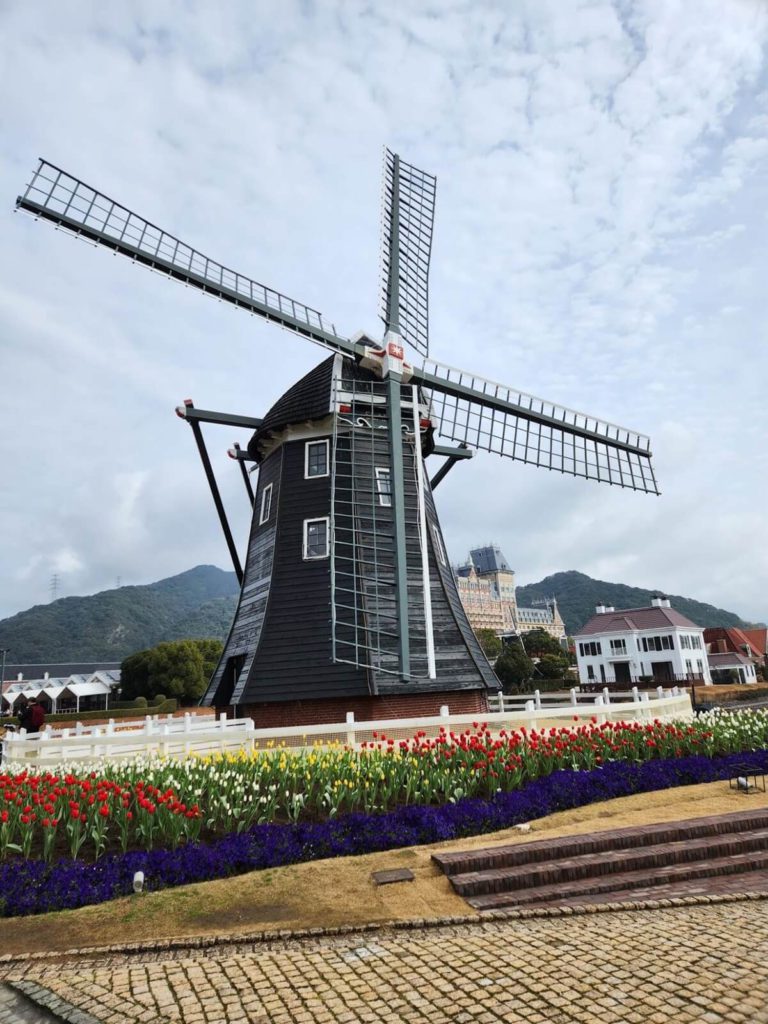
Lives in Takatsuki city, Osaka. Has been engaged in English for work and fun for years.



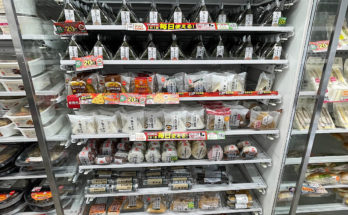
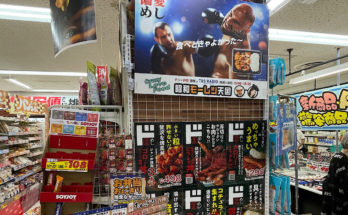
 HTJ has a YouTube page! Check it out
HTJ has a YouTube page! Check it out